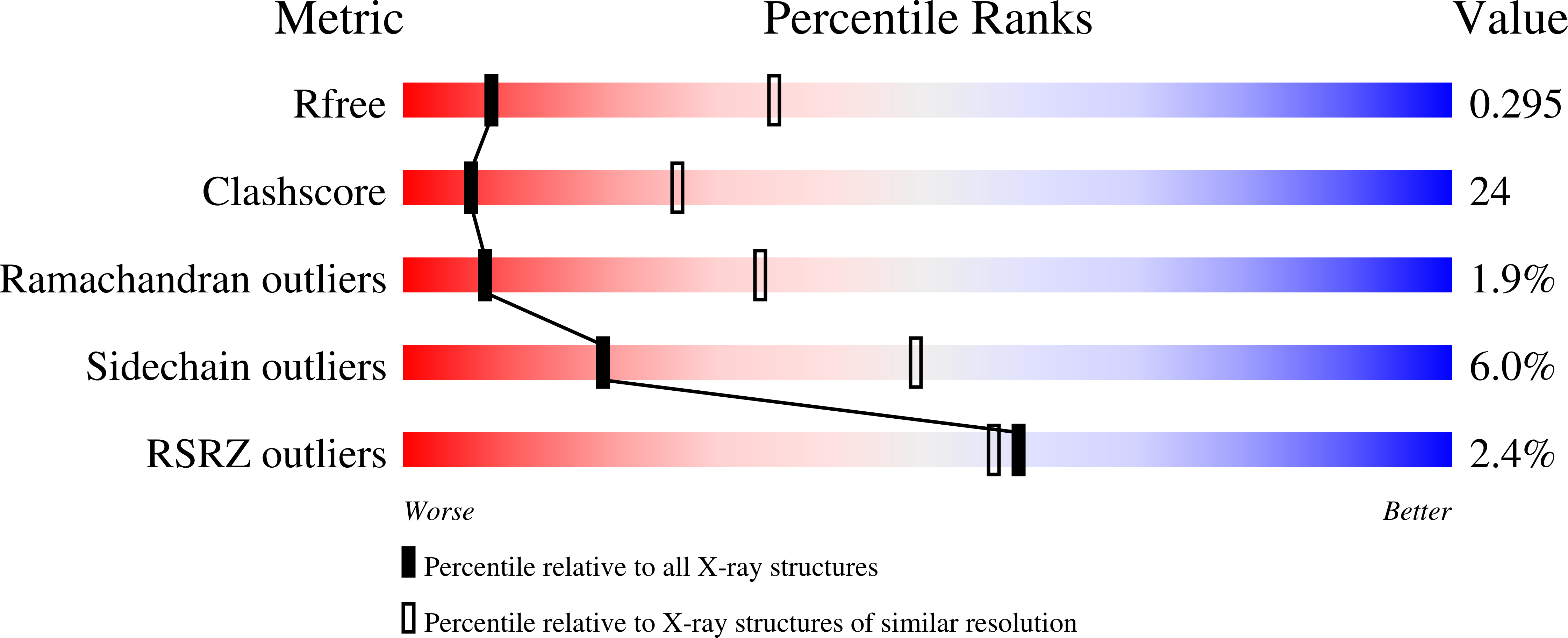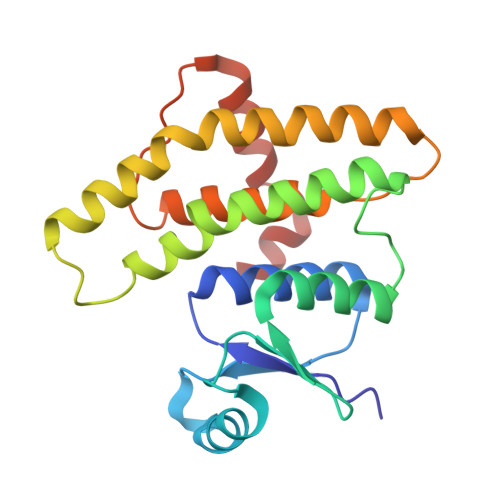Dissection of the molecular circuitry controlling virulence in Francisella tularensis.
Cuthbert, B.J., Ross, W., Rohlfing, A.E., Dove, S.L., Gourse, R.L., Brennan, R.G., Schumacher, M.A.(2017) Genes Dev 31: 1549-1560
- PubMed: 28864445
- DOI: https://doi.org/10.1101/gad.303701.117
- Primary Citation of Related Structures:
5U51, 5U56, 6ALX - PubMed Abstract:
Francisella tularensis, the etiological agent of tularemia, is one of the most infectious bacteria known. Because of its extreme pathogenicity, F. tularensis is classified as a category A bioweapon by the US government. F. tularensis virulence stems from genes encoded on the Francisella pathogenicity island (FPI). An unusual set of Francisella regulators-the heteromeric macrophage growth locus protein A (MglA)-stringent starvation protein A (SspA) complex and the DNA-binding protein pathogenicity island gene regulator (PigR)-activates FPI transcription and thus is essential for virulence. Intriguingly, the second messenger, guanosine-tetraphosphate (ppGpp), which is produced during infection, is also involved in coordinating Francisella virulence; however, its role has been unclear. Here we identify MglA-SspA as a novel ppGpp-binding complex and describe structures of apo- and ppGpp-bound MglA-SspA. We demonstrate that MglA-SspA, which binds RNA polymerase (RNAP), also interacts with the C-terminal domain of PigR, thus anchoring the (MglA-SspA)-RNAP complex to the FPI promoter. Furthermore, we show that MglA-SspA must be bound to ppGpp to mediate high-affinity interactions with PigR. Thus, these studies unveil a novel pathway different from those described previously for regulation of transcription by ppGpp. The data also indicate that F. tularensis pathogenesis is controlled by a highly interconnected molecular circuitry in which the virulence machinery directly senses infection via a small molecule stress signal.
Organizational Affiliation:
Department of Biochemistry, Duke University School of Medicine, Durham, North Carolina 27710, USA.















